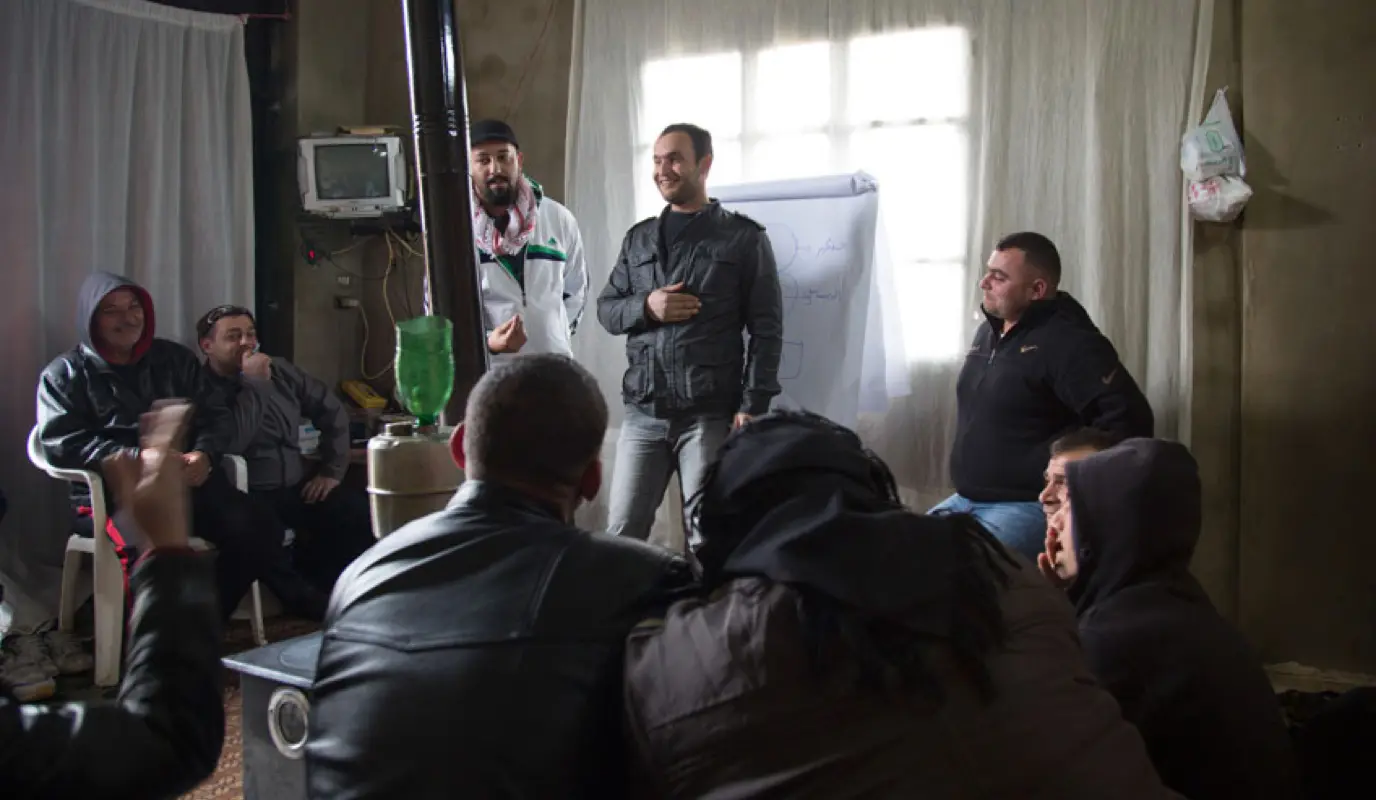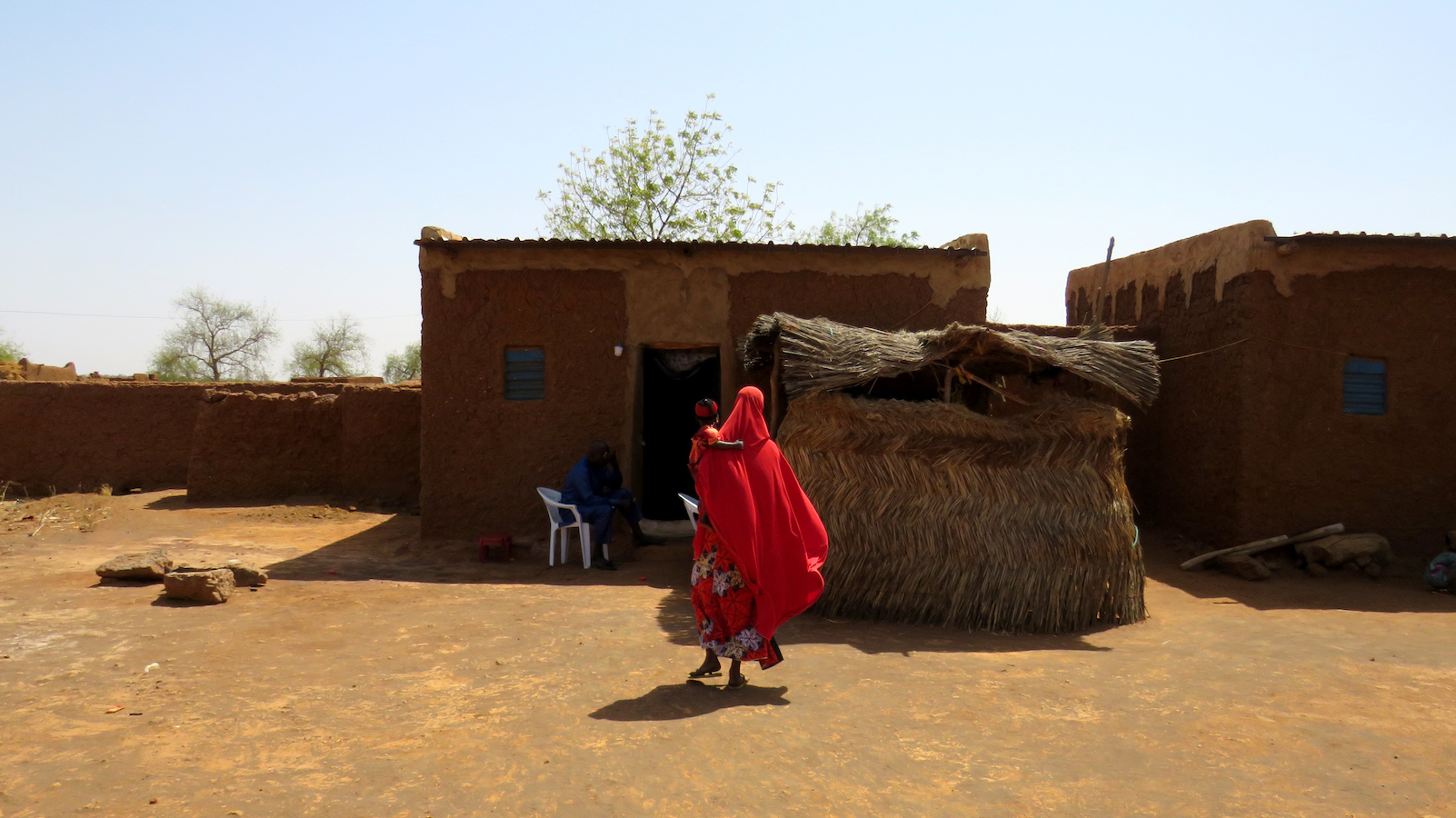Content Advisory: As this article discusses types of gender-based violence, it may be sensitive to some readers.
We know what gender-based violence is, but do we know it when we see it?
One out of every three women will experience at least one type of gender-based violence in her lifetime, though these acts of violence are not always explicit — even to the women and girls experiencing them. Below are twelve common forms of GBV that we have seen time and again in our work at Concern. They don’t tell the whole story of GBV, but they do illustrate how pervasive and multi-faceted the issue is for millions of women and girls around the world.
1. Intimate partner violence
We know about domestic violence, which can be perpetrated by any family member and often targets women and girls. Intimate partner violence is linked to domestic abuse, and is even more prevalent for women. In 2021, the World Health Organization reported that 27% of women ages 15-49 had experienced some form of physical and/or sexual violence by their romantic partner or ex-partner. The WHO also notes that 38% of all murders of women are committed by intimate partners or ex-partners.
2. Sexual harassment
This includes any unwelcome sexual advance, verbal or physical, that leaves its target feeling offended, shamed, or embarrassed after the encounter. In some cases, the intent is not to cause these effects, but the impact remains the same. In many of our gender equality programs at Concern, we work with men and women to identify these unintentional moments of harassment, which are often rooted in harmful cultural and societal gender norms.

3. Sexual violence and assault
The UN defines sexual violence as “any sexual act committed against the will of another person, either when this person does not give consent or when consent cannot be given because the person is a child, has a mental disability, or is severely intoxicated or unconscious as a result of alcohol or drugs.” We’ll get into more detail with some of these forms of violence below, but a key thing to note are the many acts of sexual violence and assault that fall into “gray” areas, including unwanted touching or fondling, and specific forms of assault, like the assault of a child.
The risk for these forms of violence increase during a humanitarian emergency, especially one that forces families to flee their homes for temporary or long-term shelter elsewhere.
4. Psychological and emotional abuse
Not all abuse is physical. Verbal abuse, threats of harm, manipulation and mind games, and isolating a woman or girl from family, friends, school, or work are all forms of psychological and emotional abuse. Like many of these forms of violence, these are two types of abuse that can be experienced by all genders, but are especially common to the experience of women and girls. One study finds that, in the EU, nearly one out of every two women has experienced some form of psychological violence from a partner.
Psychological and emotional violence can often be precursors or happen in tandem with other forms of violence, and can lead survivors to experience depression, anxiety, or post-traumatic stress disorder (PTSD) long after the abuse has ended.
5. Financial or economic abuse
Economic or financial abuse happens when a person is made to be financially dependent on another. The abuser controls the victim’s financial and other economic resources and withholds access to their money. Usually, the target of economic abuse is also prohibited from getting a job or going to school.
This is an especially common issue in many of the countries where Concern works, where women are still seen as property: first of their father, then of their husband. A 2022 report published by the organization Surviving Economic Abuse gives some stark facts and figures:
- 81% of women in Liberia surveyed for this report said they were unable to control the money in their family due to their partner's behavior.
- From a survey in Malawi, 28% of women reported various forms of economic abuse by a partner, including having money taken without their consent, being forced to work without pay, and being forced to hand over their salaries to their husband. The proportion of economic abuse in this cohort nearly doubled to 50% for women ages 21-30.
- Roughly 50% of married women ages 15-49 in Bangladesh report either being prevented from accessing work or education, or using their economic resources. 30% of women said they experienced both.
- Nearly 84% of married men in Pakistan reported perpetrating economic abuse, primarily refusing their wives to work outside the home.

6. Online or digital violence
Also known as online gender-based violence or OGBV, this relatively new form of abuse is prevalent among women even in countries with statistically-lower internet usage. In sub-Saharan Africa, the World Wide Web Foundation notes that while only 19% of women use the Internet, women in countries like Burkina Faso, Kenya, and Malawi are still highly vulnerable to OGBV, especially on platforms like Facebook (39%), Instagram (23%), and WhatsApp (14%). WWWF describes digital violence as a “rampant issue” in the Middle East and North Africa, albeit one that policy-makers have yet to address in a significant way.
The Council of Europe identifies four categories of OGBV:
- Harassment, violence, and abuse facilitated by technology (e.g., installing spyware onto an intimate partner’s devices to track them)
- Abuse that takes place or is amplified online (such as non-consensual sharing of intimate photos, aka “revenge porn”)
- Enabling violence via the internet (such as cyberbullying or doxxing a woman on social media)
- An evolving form of OGBV: Using AI and other technology to abuse others (via tactics like deepfake pornography)
7. Rape
Any form of sex that is forced and non-consensual. As we note in our gender-based violence explainer, many countries still hold beliefs and laws built around the myth that forced sex within a marriage is acceptable. But rape is defined by an action, not just the identity of the perpetrator or survivor. In Malawi, for example, the most prevalent form of sexual violence is marital rape.

8. Female genital mutilation (FGM) or circumcision
There are several methods used to perform FGM, and various reasons for doing so, though many communities regard the practice as a tradition passed down from one generation to the next. Often, traditional healers rather than healthcare professionals carry out the procedure, adding to further complications.
While this may be upheld as a tradition (so much so that over 99% of teenage girls in Somalia still undergo FGM), it is a harmful one. The WHO is clear in its position on FGM, stating that it “has no health benefits for girls and women” and is “a violation of [their] human rights.” In fact, FGM can lead to lifelong problems, including severe bleeding, cysts, infections, complications during pregnancy, and infant mortality.
9. School-related gender-based violence (SRGBV)
Harmful gender norms are often enforced at an early age through violence in schools. School-related gender-based violence (SRGBV) is an issue that Concern has been actively addressing over the last decade, and comprises acts of violence both explicit (physical, verbal, emotional, psychological and sexual violence) and implicit (especially in the texts that are used as part of school curriculums that legitimate gender imbalance).
Research has shown that these forms of violence, whether perpetrated by teachers, community members, or other students, form a major barrier to education as well as to the achievement of gender equality.

10. Early, forced, or child marriage
Child marriage is also a threat to education, as well as a threat to the rights and well-being of the young people forced into such a situation. At times, this can apply to both boys and girls — in the early years of the Syrian civil war, many young couples, often strangers to one another, were forced into marriage by their parents in hopes that daughters would be cared for and sons would avoid forced conscription. Also pervasive, however, are situations that place young girls into forced marriages with older men, particularly if a family cannot afford to care for all of its children. This often leads to marital rape and other forms of abuse, and can create a lifetime of physical and psychological health issues for girls and women.
11. Human trafficking
At the launch of a 2009 report on human trafficking, then-executive director of the UN Office on Drugs and Crime Antonio Maria Costa said that “many governments are still in denial” with regards to human trafficking. That same report notes that the term “trafficking” is misleading, placing emphasis on the transaction rather than the people most affected. It is “a crime that is more accurately described as enslavement,” the report concludes. “Exploitation of people, day after day. For years on end.”
Women and girls are again especially vulnerable to trafficking, especially those who are seeking asylum or are otherwise forcibly displaced from home. Willfully hiring a smuggler to get them to safety as a last-resort effort may lead to them being held against their will and exploited until they have paid their “debt.” Sexual exploitation is the most common form of human trafficking, though forced labor is also a common tactic.
12. Honor killings and dowry deaths
Ultimately, and heartbreakingly, GBV can become fatal in more ways than one. A 2022 study showed an increased likelihood of suicidal behaviour among victims of intimate partner violence. A UNODC study recorded over 81,000 women and girls killed intentionally in 2021, a number that has gone largely unchanged over the last decade. UNODC estimates that most of these killings were gender-related, and that, on average, more than five women or girls are killed by someone in their own family every hour.
So-called “honor killings” are one form of femicide that happens, usually at the hands of a family member, when a woman or girl has “shamed” their family. Circumstances often revolve around traditional beliefs in sexual “purity.” The UN estimates that there are at least 5,000 honor killings each year.
Dowry deaths are a similar form of femicide that are most common in Southeast Asia, including Bangladesh and Pakistan (with dowry-related violence affecting several thousand women in both countries each year). These acts usually involve a husband killing his wife — or driving her to kill herself — due to dowry-related issues.
Gender-based violence: Concern’s response
No one should suffer or be marginalized on the basis of their gender. Concern’s approach to ending gender-based violence is part of our larger work to build gender equality — a critical factor in ending poverty and hunger.
Regardless of our program focus, Concern integrates a gender-transformative framework in every country where we work.

We work with communities to identify, critically examine, and challenge the gender norms and dynamics that are hindering progress for everyone and design projects and responses that strengthen and support gender equality within a community.
Our emergency responses also prioritize women and girls, ensuring that they have access to the resources they need to stay healthy and safe during a crisis.



